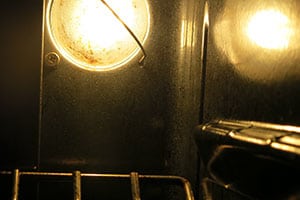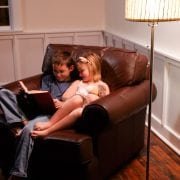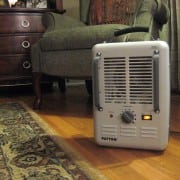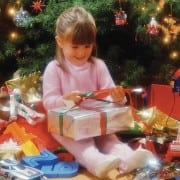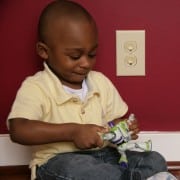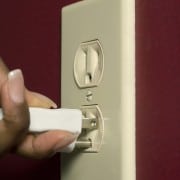Warning: don’t bake all bulbs
Oven lights are handy. Curious if a casserole’s ready? Flip the switch; no need to open the oven and release heat to get a baking update. But be careful when replacing this little light. Never put a bulb in the oven that’s not built for high heat.
Compact fluorescent lamps (CFLs) use less energy than classic incandescent bulbs, but they’re not safe in extreme temperatures. Most lighting labels designate safe temperatures, but warnings may be in fine print. Need to replace your oven light? Look for appliance light bulbs. Found at Home Depot, Lowe’s, and other retailers, these bulbs are designed for extreme temperatures in ovens and refrigerators. The hardy bulbs are here to stay; 40-watt appliance bulbs are exempt from federal lighting efficiency standards.
Why won’t CFLs work? Instead of heating a filament until white-hot to produce light like an incandescent bulb, a fluorescent lamp contains a gas that produces (UV) ultraviolet light when excited by electricity. The UV light and the white coating inside the bulb result in visible light. Since CFLs don’t use heat to create light, they are 75 percent more energy efficient. But the technology that cuts energy use doesn’t stand a chance in an oven’s 400+ degree heat.
CFLs are good for the pocketbook but not perfect in every situation. Keep these tips in mind:
- Don’t dim unless it’s dimmable. Buy a specifically designed CFL for a dimmer switch application.
- Don’t flip too fast. CFLs work best if they are left on for more than 15 minutes each time they are turned on. Older bulbs take 30 seconds to three minutes to reach efficient operation. Frequently switching them on and off shortens bulb life. Newer CFLs feature an ‘Instant on’ capability; look for that on the lighting label if you expect frequent flipping.
- Give them air. CFLs may be used in enclosed fixtures as long as the enclosed fixture is not recessed. Totally enclosed recessed fixtures create temperatures too high for CFLs.
- Protect CFLs outside. Look at the package or bulb for temperature restrictions before using a CFL outdoors.
- Don’t shake. Don’t use CFLs in vibrating environments such as a ceiling fan or garage door opener.
- Do the twist. Always screw and unscrew the lamp by its base. Never forcefully twist the CFL into a light socket by the glass tubes.
To learn more about using and recycling CFLs, visit www.epa.gov/cfl.
Source: Empire Electric Association, U.S. Department of Energy

